TEXEMS-Texture Exemplars
We present an approach to detecting and localizing defects in random color textures which requires only a few defect free samples for unsupervised training. It is assumed that each image is generated by a superposition of various-size image patches with added variations at each pixel position. These image patches and their corresponding variances are referred to here as textural exemplars or texems. Mixture models are applied to obtain the texems using multiscale analysis to reduce the computational costs. Novelty detection on color texture surfaces is performed by examining the same-source similarity based on the data likelihood in multiscale, followed by logical processes to combine the defect candidates to localize defects. The proposed method is compared against a Gabor filter bank-based novelty detection method. Also, we compare different texem generalization schemes for defect detection in terms of accuracy and efficiency.
 |
| Example marble tiles from the same family whose patterns are different but visually consistent. |
Structure of the Texem Model
In the two-layer generative model, an image in the first layer is assumed to be generated by superposition of a small number of image patches of various sizes from the second layer with added Gaussian noise at each pixel position. We define each texem as a mean image patch associated with a corresponding variance which controls its variation. The form of the texem variance can vary according to the learning scheme used. The generation process can be naturally modelled by mixture models with a bottom-up procedure.
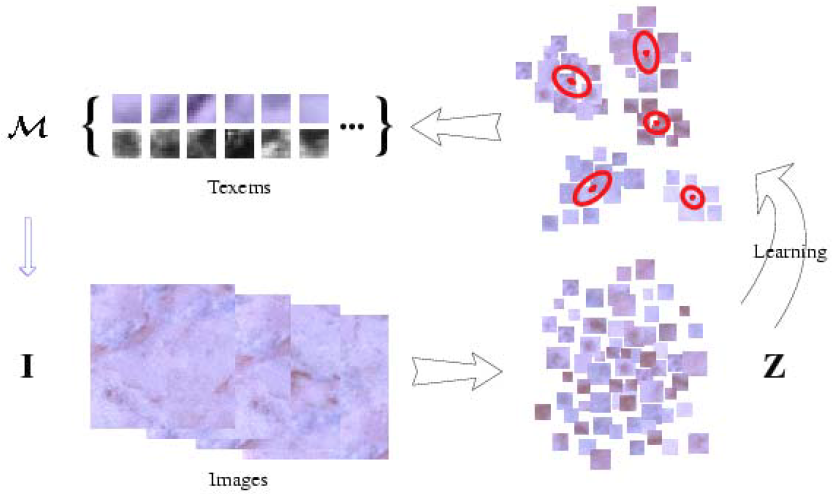 |
| An illustration of the two-layer structure of the texem model and its bottomup learning procedure. Images I are split into patches Z, from which texems M are learned. The images can, in turn, be generated from superposition of a selection of texems from M. |
We use two different mixture models to extract texems from a single sample image with each texem containing some of the overall textural primitive information. The first is for graylevel images in which we vectorise the image patches and apply a Gaussian mixture model to obtain the texems. The second represent the colour textures by texems using a mixture model learnt based on joint Gaussian distributions within local neighbourhoods.
| Original collage image | 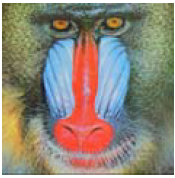 |
| Individual RGB channels |  |
| Eigenchannel images |  |
A comparison of RGB channel separation and PCA eigenchannel decomposition. The R, G, and B channels are highly correlated to each other. Their spatial relationship (texture) within each channel are very similar to each other, i.e. the channels are not sufficiently complimentary; Each eigenchannel exhibits its own characteristics, e.g., the first eigenchannel preserves most of the textural information while the last eigenchannel maintains the ambient emphasis of the image.
 |
| Eight 7 x 7 texems extracted from the above image. Each texem is defined by mean values (top row) and their corresponding variance images (bottom row). |
Example results - graylevel texems
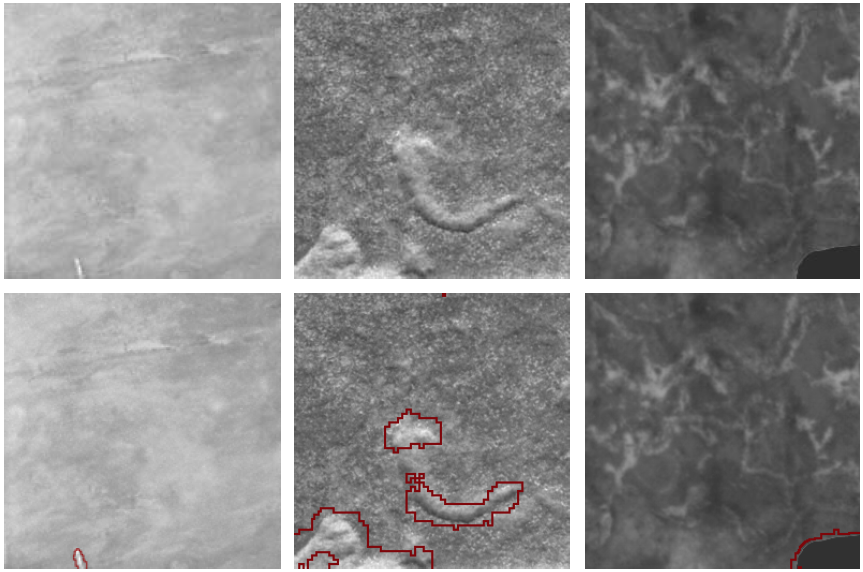 |
| Graylevel texems defect localisation. Various defects, such as print errors, bumps, and broken corner, are successfully detected. |
Example results - color texems
 |
| Defect localisation comparison. Left: original texture with print errors; middle: results by graylevel texems; and right: results by colour texems. |
Example results - interscale post-fusion method followed by texem grouping
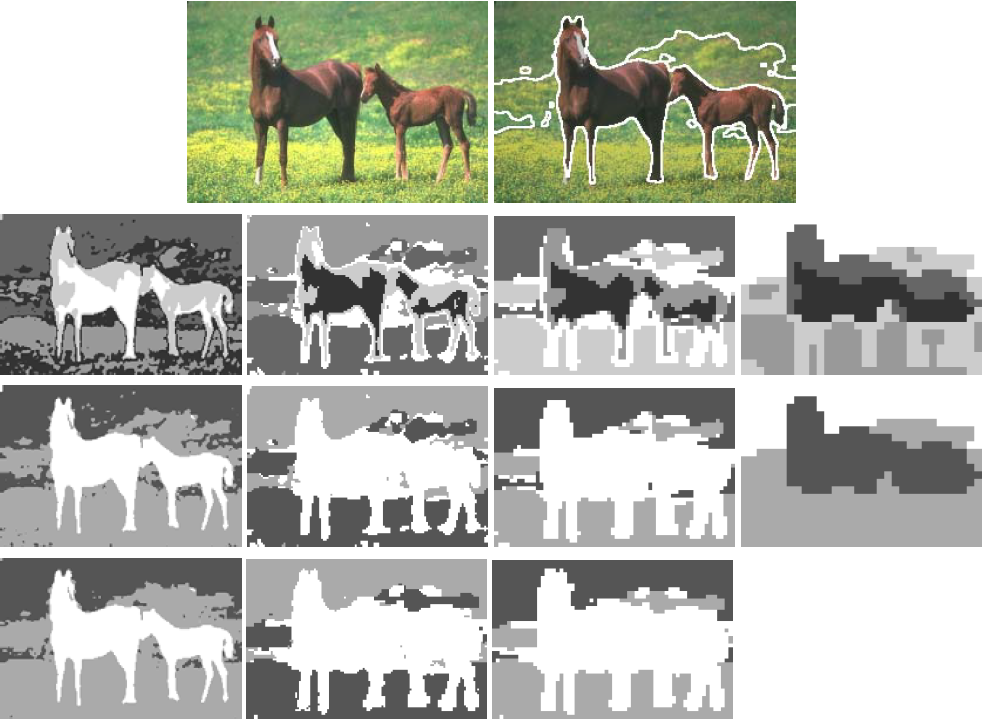 |
| An example of the interscale post-fusion method followed by texem grouping. From top to bottom: original image and its segmentation result, initial labelling of 5 texem classes for each scale, updated labelling after grouping 5 texems into 3, and results of interscale fusion. |
Example results - color image segmentation - synthetic images
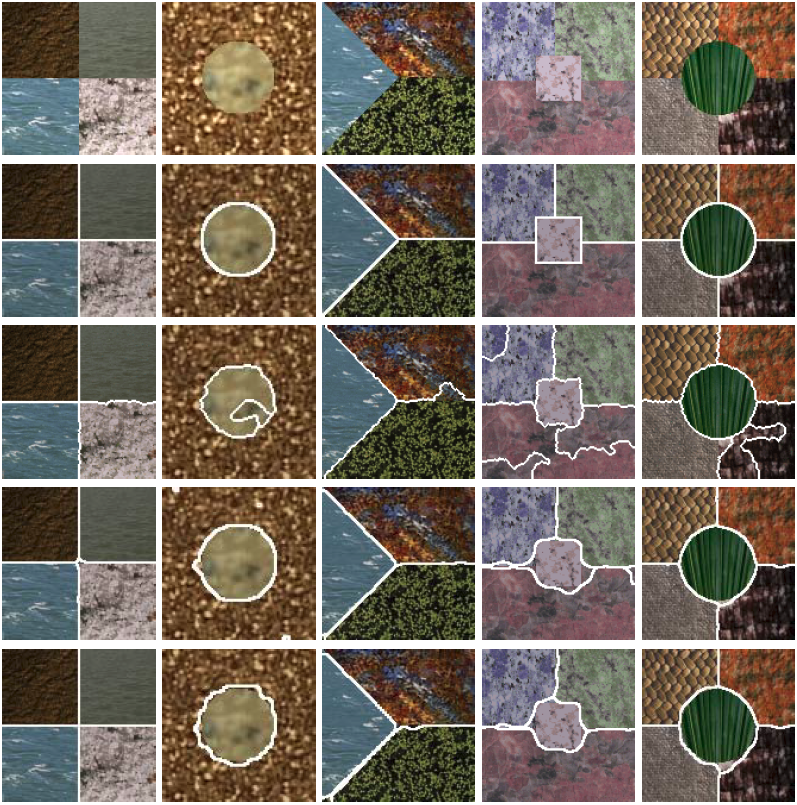 |
| Segmentation of five synthetic images with different textures. From top to bottom: original image collages, groundtruth segmentations, JSEG results, results of the proposed method using interscale post-fusion, and results of the proposed method using branch partitioning. |
Example results - color image segmentation - real images
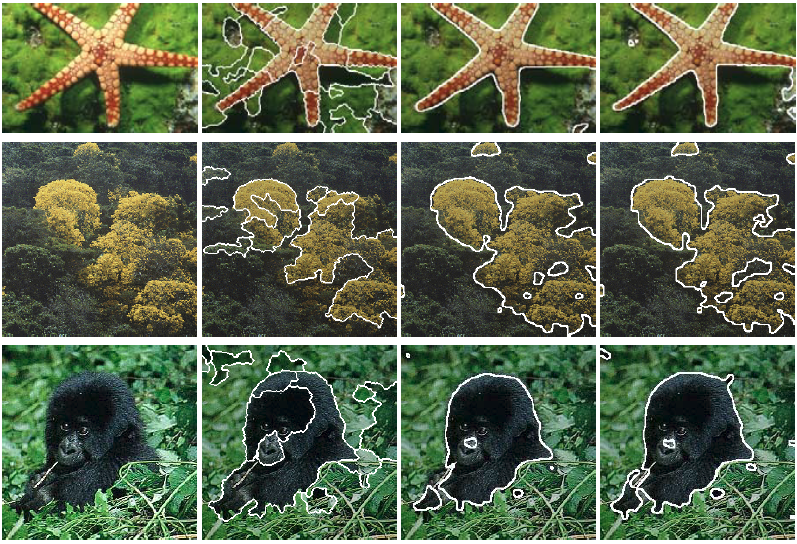 |
| Segmentation of three real images. From left to right: original images, JSEG results, results of the proposed method using interscale post-fusion, and results of the proposed method using branch partitioning. |
Funding
This project was funded by the European Commission under grant G1RD-CT- 2002-00783-MONOTONE.
Publications
- Xianghua Xie and Majid Mirmehdi, TEXEMS: Texture Exemplars for Defect Detection on Random Textured Surfaces, IEEE Transactions on Pattern Analysis and Machine Intelligence (T-PAMI), volume 29, number 8, pages 1454 - 1464, IEEE CS Press, August 2007.
- Xianghua Xie and Majid Mirmehdi, Texems: Random Texture Representation and Analysis, In Handbook of Texture Analysis, Edited by Mirmehdi, Xie, Suri, Chapter 4, Imperial College Press, 2008.
- Xianghua Xie and Majid Mirmehdi, Colour Image Segmentation using Texems, Annals of the British Machine Vision Association, number 6, pages 1-10, BMVA Press, January 2007.
- Xianghua Xie and Majid Mirmehdi, Localising Surface Defects in Random Colour Textures using Multiscale Texem Analysis in Image Eigenchannels, In Proceedings of the 12th IEEE International Conference on Image Processing, pages III 1124-1127, IEEE CS Press, September 2005.
